RBS 2010 Annual Report Download - page 205
Download and view the complete annual report
Please find page 205 of the 2010 RBS annual report below. You can navigate through the pages in the report by either clicking on the pages listed below, or by using the keyword search tool below to find specific information within the annual report.-
 1
1 -
 2
2 -
 3
3 -
 4
4 -
 5
5 -
 6
6 -
 7
7 -
 8
8 -
 9
9 -
 10
10 -
 11
11 -
 12
12 -
 13
13 -
 14
14 -
 15
15 -
 16
16 -
 17
17 -
 18
18 -
 19
19 -
 20
20 -
 21
21 -
 22
22 -
 23
23 -
 24
24 -
 25
25 -
 26
26 -
 27
27 -
 28
28 -
 29
29 -
 30
30 -
 31
31 -
 32
32 -
 33
33 -
 34
34 -
 35
35 -
 36
36 -
 37
37 -
 38
38 -
 39
39 -
 40
40 -
 41
41 -
 42
42 -
 43
43 -
 44
44 -
 45
45 -
 46
46 -
 47
47 -
 48
48 -
 49
49 -
 50
50 -
 51
51 -
 52
52 -
 53
53 -
 54
54 -
 55
55 -
 56
56 -
 57
57 -
 58
58 -
 59
59 -
 60
60 -
 61
61 -
 62
62 -
 63
63 -
 64
64 -
 65
65 -
 66
66 -
 67
67 -
 68
68 -
 69
69 -
 70
70 -
 71
71 -
 72
72 -
 73
73 -
 74
74 -
 75
75 -
 76
76 -
 77
77 -
 78
78 -
 79
79 -
 80
80 -
 81
81 -
 82
82 -
 83
83 -
 84
84 -
 85
85 -
 86
86 -
 87
87 -
 88
88 -
 89
89 -
 90
90 -
 91
91 -
 92
92 -
 93
93 -
 94
94 -
 95
95 -
 96
96 -
 97
97 -
 98
98 -
 99
99 -
 100
100 -
 101
101 -
 102
102 -
 103
103 -
 104
104 -
 105
105 -
 106
106 -
 107
107 -
 108
108 -
 109
109 -
 110
110 -
 111
111 -
 112
112 -
 113
113 -
 114
114 -
 115
115 -
 116
116 -
 117
117 -
 118
118 -
 119
119 -
 120
120 -
 121
121 -
 122
122 -
 123
123 -
 124
124 -
 125
125 -
 126
126 -
 127
127 -
 128
128 -
 129
129 -
 130
130 -
 131
131 -
 132
132 -
 133
133 -
 134
134 -
 135
135 -
 136
136 -
 137
137 -
 138
138 -
 139
139 -
 140
140 -
 141
141 -
 142
142 -
 143
143 -
 144
144 -
 145
145 -
 146
146 -
 147
147 -
 148
148 -
 149
149 -
 150
150 -
 151
151 -
 152
152 -
 153
153 -
 154
154 -
 155
155 -
 156
156 -
 157
157 -
 158
158 -
 159
159 -
 160
160 -
 161
161 -
 162
162 -
 163
163 -
 164
164 -
 165
165 -
 166
166 -
 167
167 -
 168
168 -
 169
169 -
 170
170 -
 171
171 -
 172
172 -
 173
173 -
 174
174 -
 175
175 -
 176
176 -
 177
177 -
 178
178 -
 179
179 -
 180
180 -
 181
181 -
 182
182 -
 183
183 -
 184
184 -
 185
185 -
 186
186 -
 187
187 -
 188
188 -
 189
189 -
 190
190 -
 191
191 -
 192
192 -
 193
193 -
 194
194 -
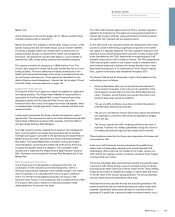 195
195 -
 196
196 -
 197
197 -
 198
198 -
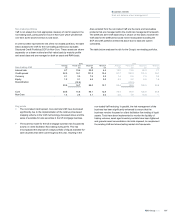 199
199 -
 200
200 -
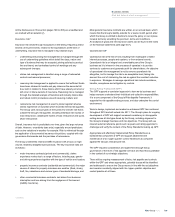 201
201 -
 202
202 -
 203
203 -
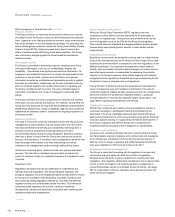 204
204 -
 205
205 -
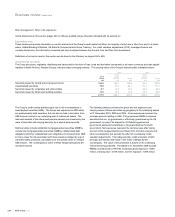 206
206 -
 207
207 -
 208
208 -
 209
209 -
 210
210 -
 211
211 -
 212
212 -
 213
213 -
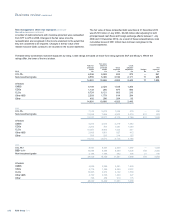 214
214 -
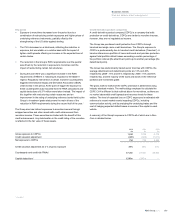 215
215 -
 216
216 -
 217
217 -
 218
218 -
 219
219 -
 220
220 -
 221
221 -
 222
222 -
 223
223 -
 224
224 -
 225
225 -
 226
226 -
 227
227 -
 228
228 -
 229
229 -
 230
230 -
 231
231 -
 232
232 -
 233
233 -
 234
234 -
 235
235 -
 236
236 -
 237
237 -
 238
238 -
 239
239 -
 240
240 -
 241
241 -
 242
242 -
 243
243 -
 244
244 -
 245
245 -
 246
246 -
 247
247 -
 248
248 -
 249
249 -
 250
250 -
 251
251 -
 252
252 -
 253
253 -
 254
254 -
 255
255 -
 256
256 -
 257
257 -
 258
258 -
 259
259 -
 260
260 -
 261
261 -
 262
262 -
 263
263 -
 264
264 -
 265
265 -
 266
266 -
 267
267 -
 268
268 -
 269
269 -
 270
270 -
 271
271 -
 272
272 -
 273
273 -
 274
274 -
 275
275 -
 276
276 -
 277
277 -
 278
278 -
 279
279 -
 280
280 -
 281
281 -
 282
282 -
 283
283 -
 284
284 -
 285
285 -
 286
286 -
 287
287 -
 288
288 -
 289
289 -
 290
290 -
 291
291 -
 292
292 -
 293
293 -
 294
294 -
 295
295 -
 296
296 -
 297
297 -
 298
298 -
 299
299 -
 300
300 -
 301
301 -
 302
302 -
 303
303 -
 304
304 -
 305
305 -
 306
306 -
 307
307 -
 308
308 -
 309
309 -
 310
310 -
 311
311 -
 312
312 -
 313
313 -
 314
314 -
 315
315 -
 316
316 -
 317
317 -
 318
318 -
 319
319 -
 320
320 -
 321
321 -
 322
322 -
 323
323 -
 324
324 -
 325
325 -
 326
326 -
 327
327 -
 328
328 -
 329
329 -
 330
330 -
 331
331 -
 332
332 -
 333
333 -
 334
334 -
 335
335 -
 336
336 -
 337
337 -
 338
338 -
 339
339 -
 340
340 -
 341
341 -
 342
342 -
 343
343 -
 344
344 -
 345
345 -
 346
346 -
 347
347 -
 348
348 -
 349
349 -
 350
350 -
 351
351 -
 352
352 -
 353
353 -
 354
354 -
 355
355 -
 356
356 -
 357
357 -
 358
358 -
 359
359 -
 360
360 -
 361
361 -
 362
362 -
 363
363 -
 364
364 -
 365
365 -
 366
366 -
 367
367 -
 368
368 -
 369
369 -
 370
370 -
 371
371 -
 372
372 -
 373
373 -
 374
374 -
 375
375 -
 376
376 -
 377
377 -
 378
378 -
 379
379 -
 380
380 -
 381
381 -
 382
382 -
 383
383 -
 384
384 -
 385
385 -
 386
386 -
 387
387 -
 388
388 -
 389
389 -
 390
390 -
 391
391 -
 392
392 -
 393
393 -
 394
394 -
 395
395 -
 396
396 -
 397
397 -
 398
398 -
 399
399 -
 400
400 -
 401
401 -
 402
402 -
 403
403 -
 404
404 -
 405
405 -
 406
406 -
 407
407 -
 408
408 -
 409
409 -
 410
410 -
 411
411 -
 412
412 -
 413
413 -
 414
414 -
 415
415 -
 416
416 -
 417
417 -
 418
418 -
 419
419 -
 420
420 -
 421
421 -
 422
422 -
 423
423 -
 424
424 -
 425
425 -
 426
426 -
 427
427 -
 428
428 -
 429
429 -
 430
430 -
 431
431 -
 432
432 -
 433
433 -
 434
434 -
 435
435 -
 436
436 -
 437
437 -
 438
438 -
 439
439 -
 440
440 -
 441
441 -
 442
442 -
 443
443 -
 444
444 -
 445
445
 |
 |

Reputation risk*
Reputation risk is defined as the potential loss in reputation that could
lead to negative publicity, loss of revenue, costly litigation, a decline in
the customer base or the exit of key Group employees.
Reputation risk can arise from actions taken by the Group or a failure to
take action, such as failing to assess the environmental, social or ethical
impacts of clients or projects that the Group has provided products or
services to.
The Group seeks to safeguard its reputation by considering the impact on
the value of its franchise from how it conducts business, its choice of
customers and the way stakeholders view the Group. Managing the
Group’s reputation is the joint responsibility of all employees, and
reputational considerations should, as part of standard practice, be
integrated into the Group’s day-to-day decision making structures.
Currently the Group manages reputational risk through a number of
functions, such as divisions, Group Communications, Group
Sustainability and an Environmental, Social and Ethical (ESE) risk
management function. The latter function is responsible for assessing
ESE risks associated with business engagements and business divisions.
The Board has ultimate responsibility for managing any impact on the
reputation of the Group arising from its operations. The Group
Sustainability Committee (established at the beginning of 2010) sets the
overall strategy and approach for the management of Group sustainability,
however all parts of the Group take responsibility for reputation
management.
The risk is viewed as material given the central nature of the Group’s
market reputation in the strategic risk objectives.
Pension risk*
The Group is exposed to risk from its defined benefit pension schemes to
the extent that the assets of the schemes do not fully match the timing
and amount of the schemes’ liabilities. Pension scheme liabilities vary
with changes to long-term interest rates, inflation, pensionable salaries
and the longevity of scheme members as well as changes in legislation.
The Group is exposed to the risk that the market value of the schemes’
assets, together with future returns and any additional future contributions
could be considered insufficient to meet the liabilities as they fall due. In
such circumstances, the Group could be obliged, or may choose, to make
additional contributions to the schemes.
The RBS Group Pension Fund (“Main scheme”) is the largest of the
schemes and the main source of pension risk. The Main scheme
operates under a trust deed under which the corporate trustee, RBS
Pension Trustees Limited, is a wholly owned subsidiary of The Royal
Bank of Scotland plc and the trustee board comprises six directors
selected by the Group and four directors nominated by members.
The trustee is solely responsible for the investment of the schemes
assets which are held separately from the assets of the Group. The
Group and the trustee must agree on the investment principles and the
funding plan.
In October 2006, the Main scheme was closed to new employees. In
November 2009, the Group confirmed that it was making changes to the
Main scheme and a number of other defined benefit schemes including
the introduction of a limit of 2% per annum (or Consumer Price Indices
(CPI) inflation, if lower) to the amount of any salary increase that will
count for pensionable purposes.
Risk appetite and investment policy are agreed by the trustee with
quantitative and qualitative input from the scheme actuaries and
investment advisers. The trustee also consults with the Group to obtain
its view on the appropriate level of risk within the pension fund.
The Group maintains an independent review of risk within its pension
funds. The Group Risk Committee now monitors pension obligation risk
on an ongoing basis with a monthly report illustrating the funding
positions and key sensitivities of the Group’s pension schemes.
Additionally, as part of the Internal Capital Adequacy Assessment
Process (ICAAP) process, the change in asset and liability values is
modelled over a twelve-month time horizon under a stressed scenario.
The funding valuation of the Main scheme at 31 March 2010 is currently
in progress. Further details are given in Note 4 on the accounts.
The Main scheme, which represents 84% of plan assets at 31 December
2010, is invested in a diversified portfolio of quoted and private equity,
government and corporate fixed interest and index-linked bonds, and
other assets including property and hedge funds. The trustee has taken
measures to partially mitigate inflation and interest rate risks both by
investment in suitable physical assets and by entering into inflation and
interest rate swaps. The Main scheme has an additional exposure to
rewarded risk by investing in equity futures.
The table below shows the impact on the Main schemes assets and
liabilities (measured according to IAS 19 ‘Employee Benefits’) of changes
in interest rates and equity values at the year end, taking account of the
current asset allocation and hedging arrangements.
Change
in value
of assets
£m
Change
in value of
liabilities
£m
Decrease/
(increase) in net
pension
obligations
£m
As at 31 December 2010
Fall in nominal swap yields of 0.25% at all durations with no change in credit spreads 422 193 229
Fall in real swap yields of 0.25% at all durations with no change in credit spreads 355 799 (444)
Fall in credit spreads of 0.25% at all durations with no change in nominal or real swap yields 98 1,005 (907)
Fall in equity values of 10% (1,083) — (1,083)
203RBS Group 2010
Business review
Risk and balance sheet management
